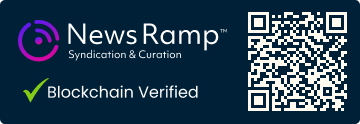Advancements in Virtual Care and RPM Highlight Need for Balance to Combat Clinician Burnout

Summary
Full Article
The healthcare industry is at a crossroads with the rapid advancement of virtual care and remote patient monitoring (RPM) technologies, which promise to transform patient care but also contribute to rising clinician burnout. Kent Dicks, CEO of Life365, points out the paradox where technology, designed to streamline healthcare delivery, has inadvertently added to the workload of healthcare providers. A 2024 study underscores this issue, revealing that clinicians who spend after-hours in electronic health record (EHR) systems are more than twice as likely to report burnout, with some, like those at the Mayo Clinic, dedicating an average of 80 minutes daily just to update patient records.
Despite the challenges, there's a silver lining. Patients are increasingly open to using technology for health monitoring, with 81% expressing a preference for at-home monitoring of vital signs. However, the complexity of these technologies remains a significant barrier, particularly for older adults and residents of rural areas. Dicks advocates for the development of 'invisible' healthcare technology—systems so intuitive and seamlessly integrated that they minimize friction for both patients and clinicians. This vision includes leveraging automation to reduce manual data entry and designing user-friendly interfaces that enhance healthcare outcomes without overwhelming the users.
To navigate the complexities of implementing virtual care programs, Dicks suggests a measured approach: starting small with high-impact conditions such as hypertension and scaling thoughtfully. Tailoring programs to meet the specific needs of communities and ensuring that workflows and support systems are robust before full-scale implementation are critical steps. The benefits of effectively implemented virtual care are substantial, including reduced hospitalizations, lower healthcare costs, and patients who feel more empowered in managing their health. Studies have shown that nearly 90% of RPM participants report increased confidence in managing their health conditions.
The overarching message from Dicks is clear: technology must serve people, not the other way around. As virtual care continues to evolve, finding the right balance between innovation and usability, while providing adequate support for clinicians, will be essential in unlocking the full potential of these technologies to improve healthcare delivery and access. The journey towards this balance is not just about technological advancement but also about reimagining healthcare workflows to prioritize both patient outcomes and clinician well-being.

This story is based on an article that was registered on the blockchain. The original source content used for this article is located at citybiz
Article Control ID: 84284